
Top 9 ProdPad Alternatives & Competitors For Product Managers
Prodpad is a complete product management tool comprising three modules - roadmap, ideas, and feedback management. Companies use it to gather and structure information from feedback to a roadmap. it also provides a simple way to visualize product roadmaps and create visible idea backlogs.
It might not be the best choice for most companies. Along with an old interface, Prodpad is a pricey tool many businesses shy away from.
If you want a modern and user-friendly Prodpad alternative, we've compiled a list of comparable, if not better, tools than Prodpad. We recommend these top 9 customer feedback tools and their pros and cons.
What is Prodpad?
ProdPad is a product feedback and road-mapping tool where product teams can share feedback about the product and upvote features with a feature voting board. It helps create a neatly structured roadmap for multiple products with a timeline view that showcases the updated announcements of a particular product.
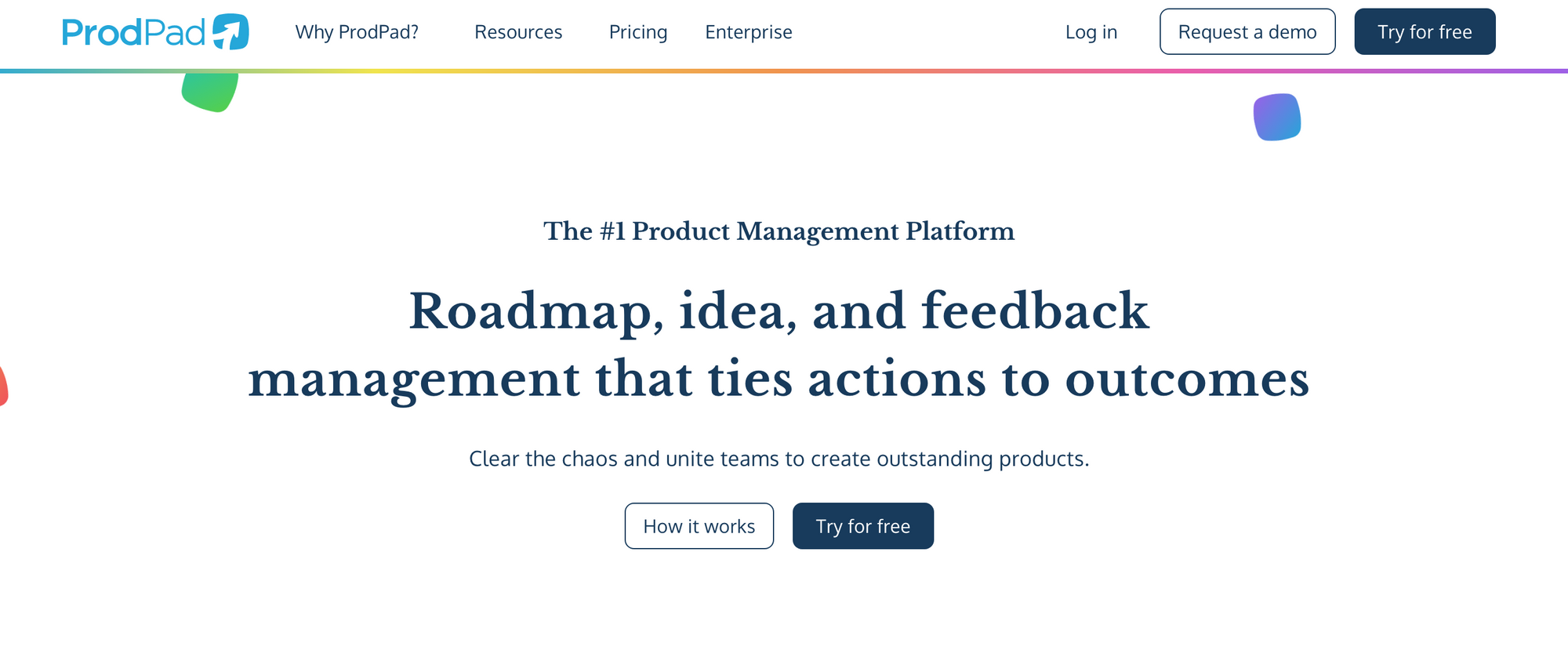
What is Prodpad Used For?
Best for product feedback and roadmapping.
How much does Prodpad cost?
Prodpad charges $24 per module per editor. If you want to use all roadmaps, ideas, and feedback modules, it totals $72 per month for an editor.
Features of Prodpad
- ProdPad helps customers to visualize, collaborate and easily maintain their roadmaps in one place, replacing spreadsheets.
- It also allows users to create multiple ideas and feedback that can be later used based on priorities. Users love the visualization charts inside the tool, which help teams prioritize projects better.
- Its interface has a reasonably intuitive design that allows me to perform multiple tasks and activities relatively quickly.
- Customer support seems lacking in many ways. Customers complain that it is buggy, making collected ideas disappear and reappear out of the blue.
- ProdPad has a steep learning curve and can be overwhelming for new users.
- Their pricing model seems different. They don't charge per individual seat but on bundles of seats that work out to $72 per user.
Top 9 ProdPad Alternatives & Competitors
1.Rapidr Vs ProdPad
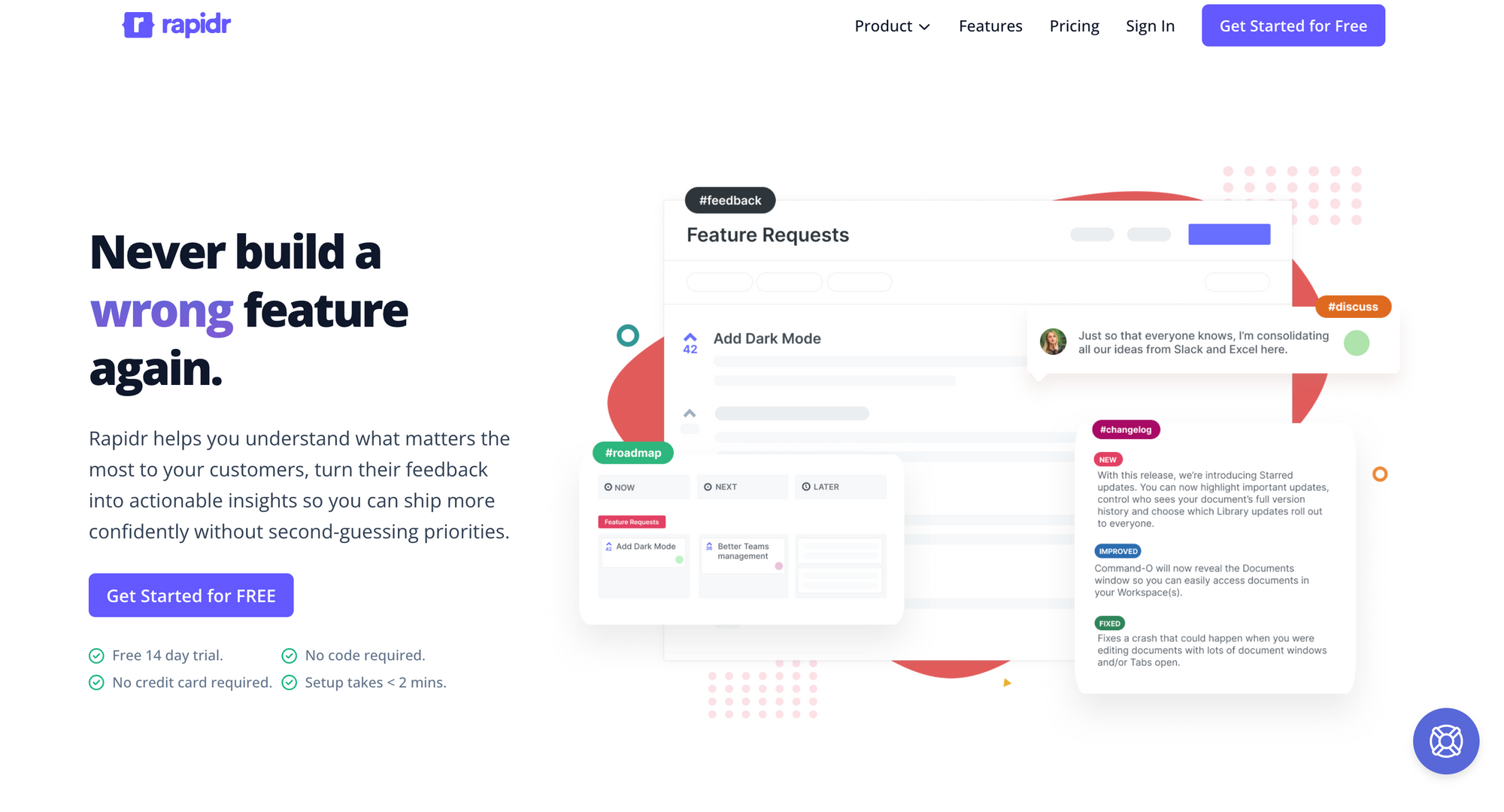
Rapidr helps product teams understand what customers need by tracking feature requests and ideas, analyzing & prioritizing what to build next, creating a roadmap backed by customer insights, and communicating new features with release notes.
Understanding customers begin by collecting their feedback in a centralized app. Rapidr helps you capture product ideas, requests, and feedback from colleagues and customers with their customer portal and in-app widget.
Next, for analyzing and prioritizing the roadmap based on customer insights, Rapidr helps you slice and dice feedback by customer attributes and sorting by votes.
Lastly, inform your roadmap with the most critical feedback, and let your customers know what's new with release notes.
Pricing: Starts at $19/ user/ month.
Use Case: Best for product feedback and roadmapping.
Pros of Rapidr
- Rapidr is an end-to-end feedback solution, so you don't have to glue multiple apps together. You get feedback collection software, roadmapping software, and release notes software with it.
- Rapidr's hosted feedback portal is lightweight, easy to use, and customizable, fitting perfectly with your existing workflows and brand design.
- Rapidr is built to support varying workflows and match different product development terminology across companies. It's built to be customizable from day one.
- Rapidr is one of the most affordable and cost-effective solutions that offer excellent value for money stacked against the other enterprise options on this list. Rapidr's pricing is based on the value you derive from the software instead of per-seat pricing.
- Rapidr can be fully white-labeled on high-end plans. White-labeling removes the "Powered by Rapidr" link from your feedback portal and emails, which means no visible branding from Rapidr.
Cons of Rapidr
- Rapidr has a few integrations at the time of writing, such as Slack, Jira, Zapier, and Intercom, and many are on the way. They track integrations on their public feedback board.
- Rapidr is relatively new in the market, and many features are still being built. But with features rivaling Prodpad at a much lower price and in the hands of trusted people, it's an excellent option for anyone looking for a lean, simple, clean product feedback alternative.
2. ProductPlan Vs ProdPad
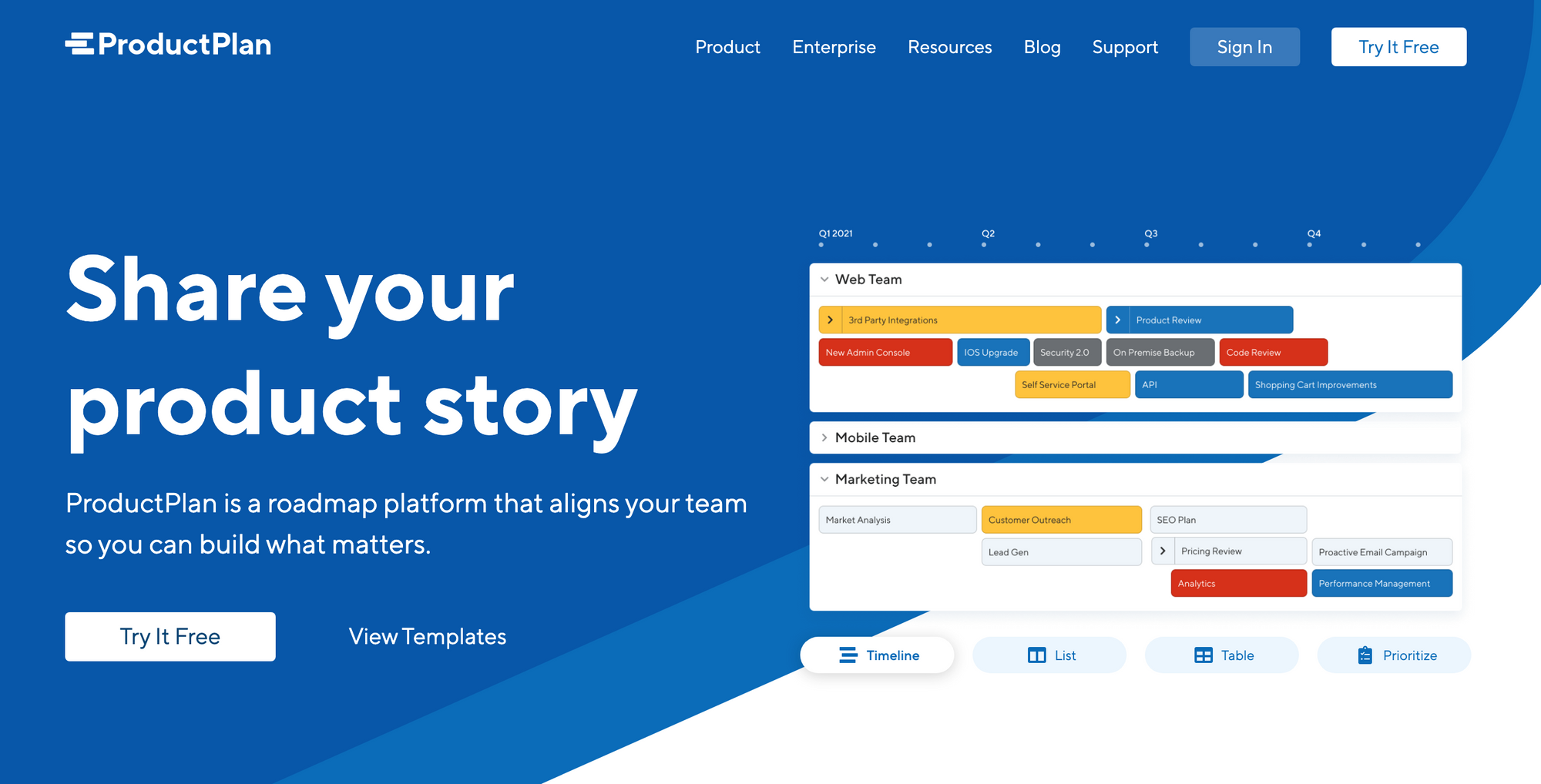
ProductPlan is easy-to-use roadmapping software that helps teams plan, visualize, and share the product feedback strategy. Create beautiful, collaborative roadmaps in minutes.
Pricing: Starts at $39 /user /month.
Use Case: Best for product roadmapping.
Pros of ProductPlan
- ProductPlan easily supports creating and updating roadmaps with a strong level of detail - the filtering capabilities also ensure we can share relevant roadmap details with the people who need them.
- One of their customers said," ProductPlan makes all work within the company more agile and simple, allowing working time to be more valued and without setbacks."
- It helps provide all stakeholders visibility into a company's development roadmap, knowing what is currently being worked on and what is coming up in the pipeline.
Cons of ProductPlan
- ProductPlan is a product management software first, not developed for feedback management, lacks product feedback boards, changelogs, and custom status, and requires extra payment for features like SSO, and customer domain.
- It accomplishes its core goal of visualizing a product roadmap, but it's hard to collaborate with teams, as not everyone has a paid account.
- The cost can be a little higher for small companies, limiting the use capacity for those who need it and can not afford a tool like this.
3. Aha Vs ProdPad
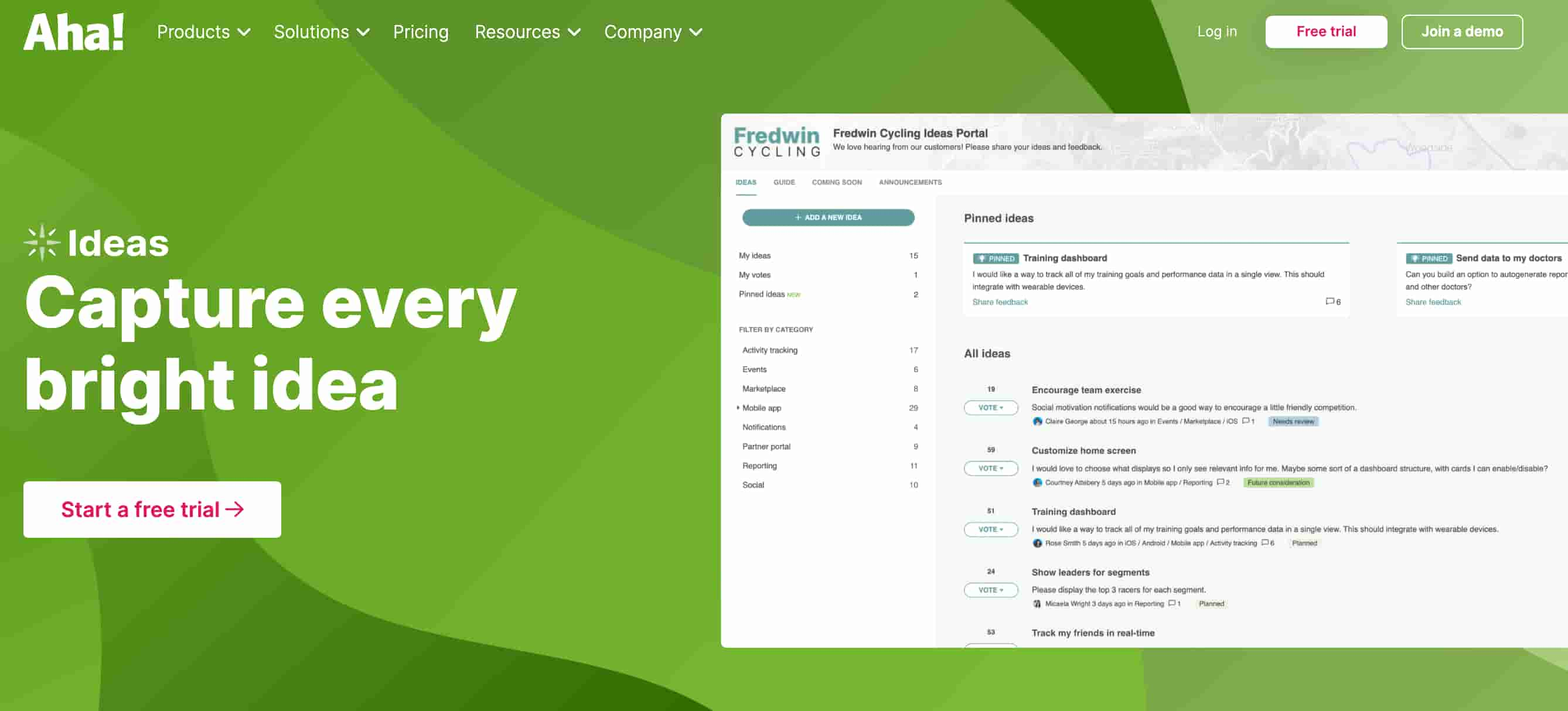
Aha claims to be one of the best road mapping software. It allows us to set strategy and KPIs, crowdsource and manage ideas and manage features with a Kanban board and Gantt charts. Aha empowers product managers to understand the why, when, and what of products and create product portfolios with schedules, goals, release strategies, etc.
Pricing: Starts at $59/user /month.
Use Case: Best for product roadmapping.
Pros of Aha
- Aha provides all product management facilities in one tool: requirement gathering, epic and user story breakdown, roadmap, backlog management, etc.
- Aha can be a sophisticated tool that's very flexible and configurable, so it requires a little while to get fluent with everything it may do and be aware of the best workflow patterns.
- Aha is focused on high-level strategic planning instead of a detailed project and task planning to achieve strategy and roadmap features with multiple customizable reports.
- Aha roadmaps work way better as a roadmapping tool than Aha ideas used for idea management. It is great for creating Kanban boards and Gantt charts.
Cons of Aha
- Aha is a roadmap tool first and a feedback tool second. As a result, configuring it feels like a chore.
- They have per-seat pricing, so you'd need to pay for each teammate you bring to the platform. They offer scaled plans to larger businesses and provide multiple product managers access.
4. Jira Vs ProdPad
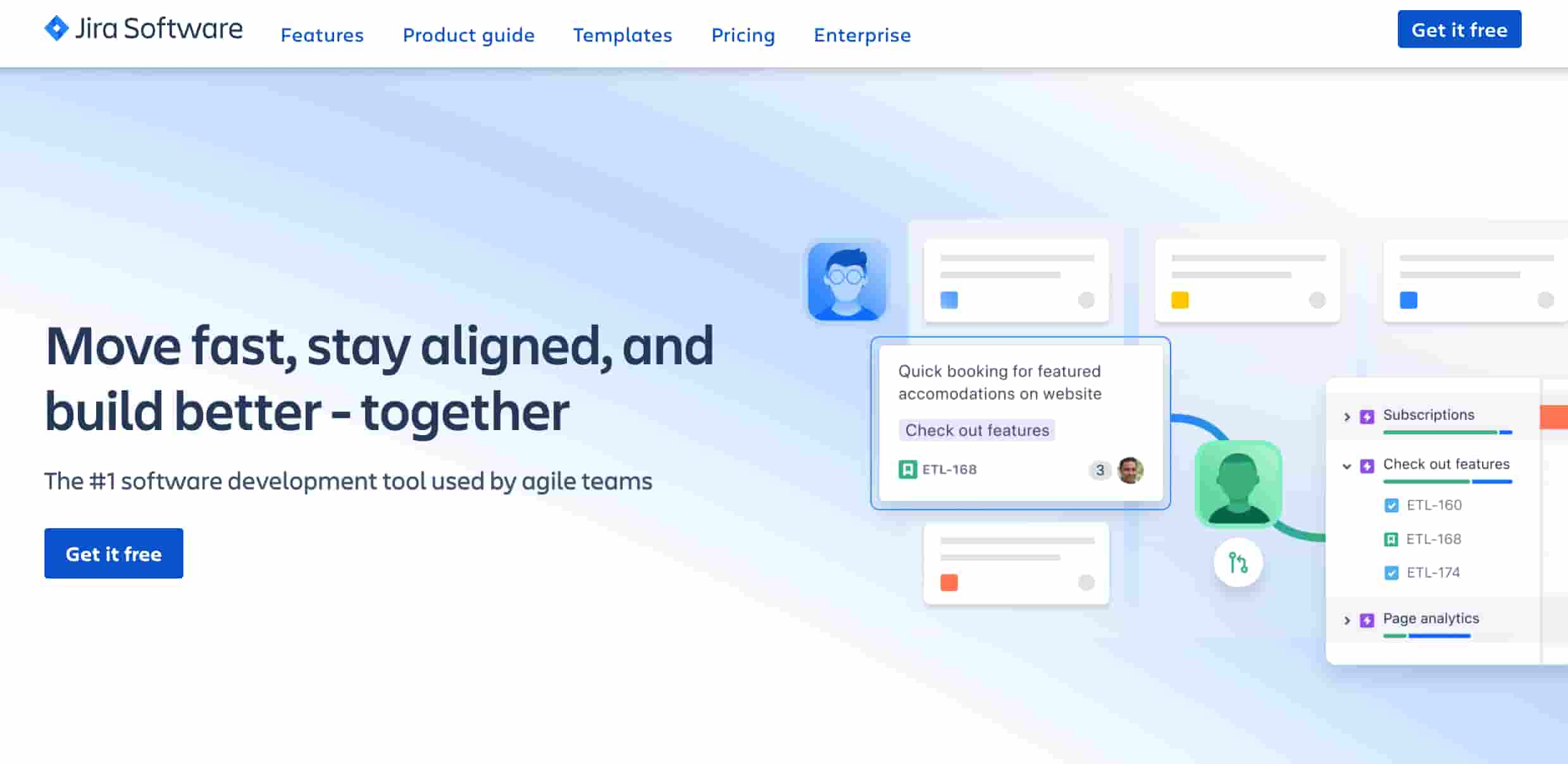
Jira helps teams to capture and organize issues, assign work, and follow team activity. It also helps track progress and performance with customizable reports and dashboards and supports various integrations such as Slack and GitHub. However it can be quite complex to navigate and requires time and effort to set it up.
Pricing: Jira charges $7.50 per user per month.
Use Case: Best for issue tracking and project management.
Pros of Jira
- Jira is a project management tool that simplifies team collaboration by tracking progress, communicating updates, and assigning responsibilities among team members.
- Jira supports bug and milestone tracking, sprints, and agile product management in one tool.
- Jira also provides reports and analytics of the product development process.
Cons of Jira
- Jira started its life as an issue-tracking system. Its feedback management capabilities are lacking, and it shows.
- It lacks feedback portals, segmentation of feedback based on users, and feature prioritization filters to analyze and identify critical feedback, which is supported in Rapidr.
- Jira can be expensive, especially for organizations adding more add-ons and integrations.
5. Asana Vs ProdPad
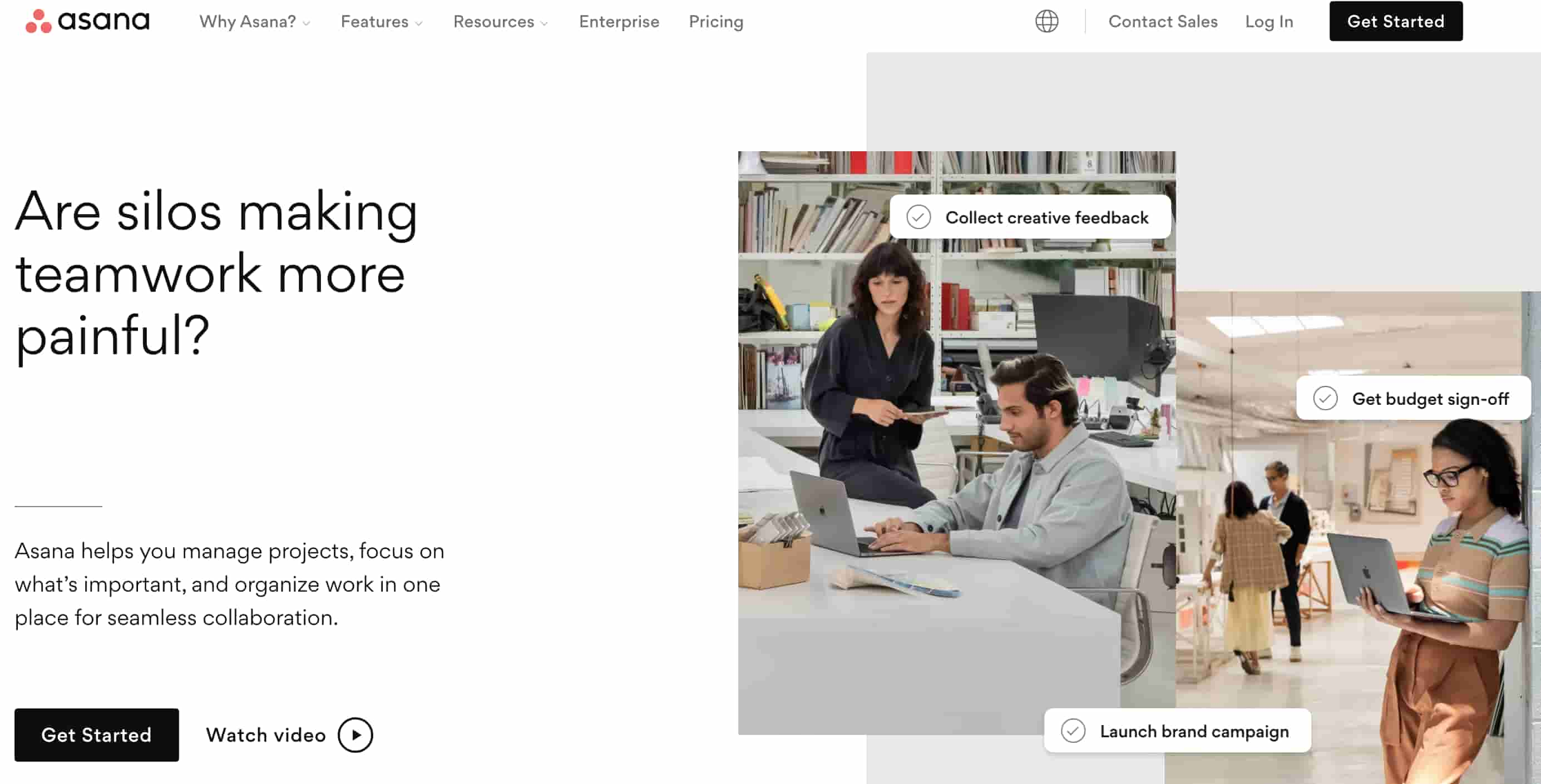
Asana is a task management and collaboration software that helps teams orchestrate their work, from daily tasks to strategic initiatives. In Asana, you can easily track initiatives' status and accurately view your progress toward goals.
Pricing: Offers a free trial. Paid plans start at $21 for five users per month.
Use Case: Best for task management and collaboration.
Pros of Asana
- Asana provides features and filters, making it easy for teams to ensure tasks are organized, on track, and going in the right direction.
- Product managers can manage projects and tasks collaboratively from anywhere, receiving notifications, sharing tasks, and efficiently monitoring them.
- Asana also compliments a massive list of integrations allowing teams to work directly with other tools without requiring additional input through exports.
Cons of Asana
- Automation in Asana is for enterprises only, and their pro/enterprise plan can be slightly more expensive for smaller companies.
- Customers claim it is not always easy to edit a project; staying in sync and keeping everyone on the same page in the tool is hard.
6. Productboard Vs ProdPad
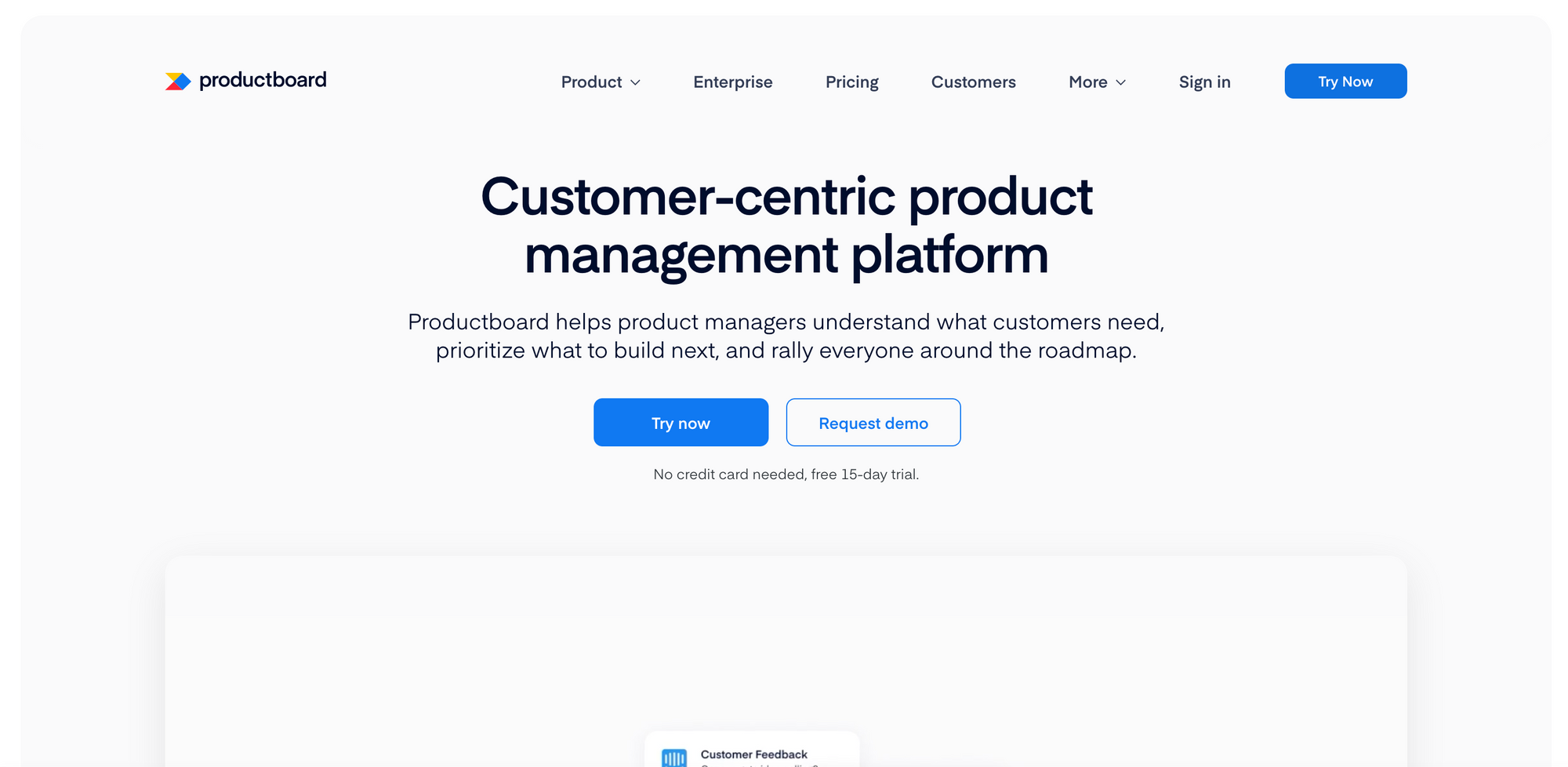
Productboard is a project management tool that captures problems, feedback, and user research, organizes feature ideas, plans releases, and shares beautiful interactive roadmaps. It consolidates ideas from customers into a prioritized roadmap based on data.
Pricing: Starts at $39/month per teammate
Use Case: Best for project management and roadmapping.
Pros of Productboard
- Productboard is a project management tool that combines a user feedback voting board and inbox with prioritization methods and roadmaps.
- Key features include collecting product feedback from email, prioritizing features with a set of frameworks, various product roadmap templates, etc.
- Many integrations such as Slack, Zapier, and Salesforce are supported to manage projects and customer feedback.
Cons of Productboard
- Productboard feels like an overly complex project management tool, much less a feature-tracking tool. No doubt, it's great, consisting of all the customizations, but configuring the right setting for managing user feedback feels like a chore.
- It is expensive. At the time of writing, prices start from $20 a month for one admin and five contributors with limited admin rights and restricted features compared to other feedback management tools.
7. Roadmunk Vs ProdPad
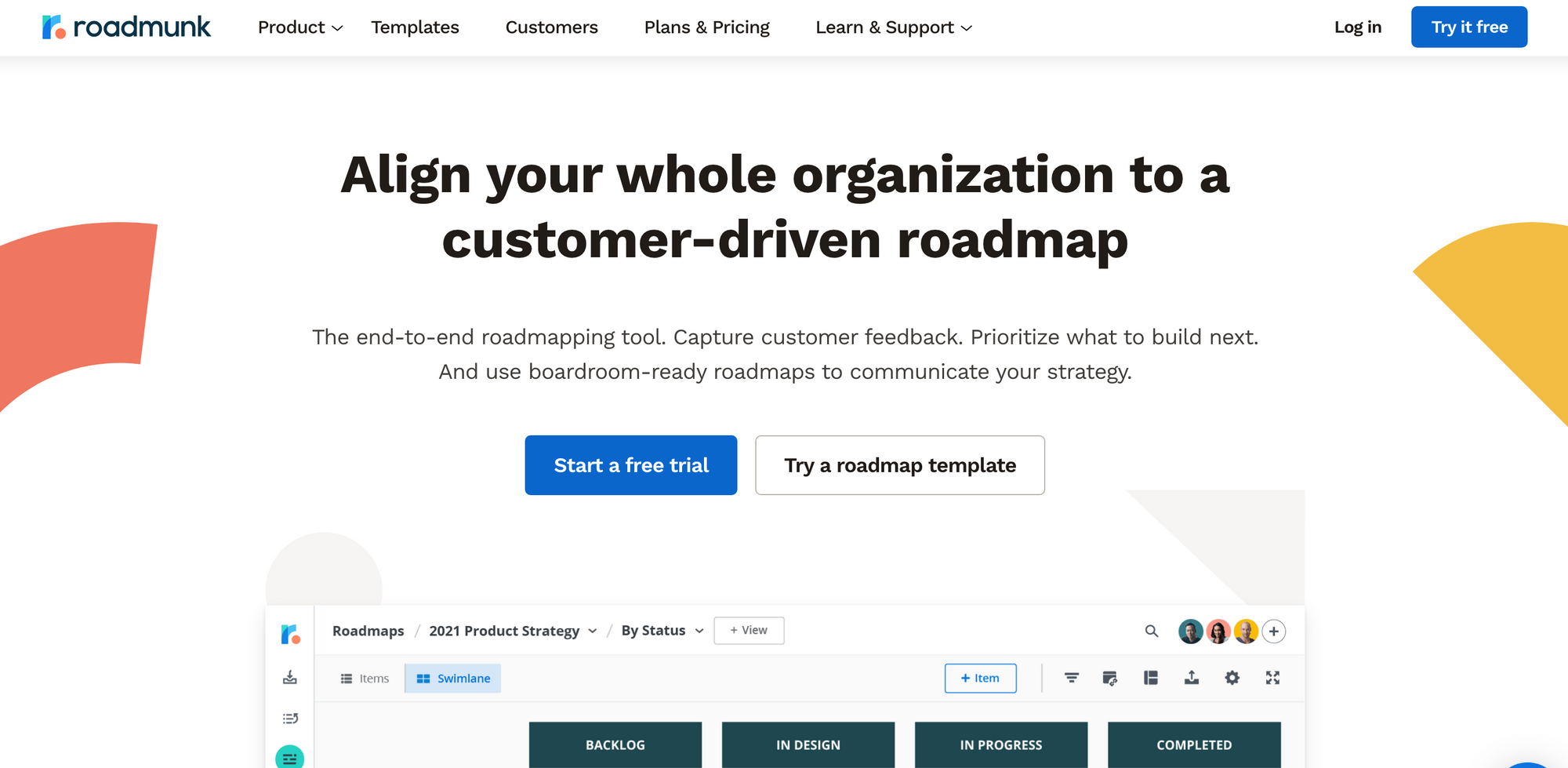
Roadmunk is a web-based product management platform that helps product managers plan and build customer-driven roadmaps across all organizations and industries. Roadmunk is an end-to-end management tool that creates customer-driven product roadmaps.
Pricing: Starts at $19/ user /month.
Use case: Best for product roadmapping.
Pros of Roadmunk
- The UI seems very clean and makes it easy for collaborators to look at the swim lanes or complete picture and know what they're looking at. This product perfectly shows complex timelines with multiple swimlanes, owners, and dependencies.
- The user experience and onboarding are brilliant, as quoted by its customers. This is simply the best planning software for small-to-medium technology companies.
- If you are looking for a product roadmap tool that provides great visuals but is limited in scope and does not require collaboration from several contributors, Roadmunk could do an adequate job for you.
Cons of Roadmunk
- Customers quote the tool to be expensive for small teams. Customers indicate the software is unclear on how you share and export your roadmap appropriately.
- The product does not scale well when multiple users collaborate on the same road map.
8. Craft.io Vs ProdPad
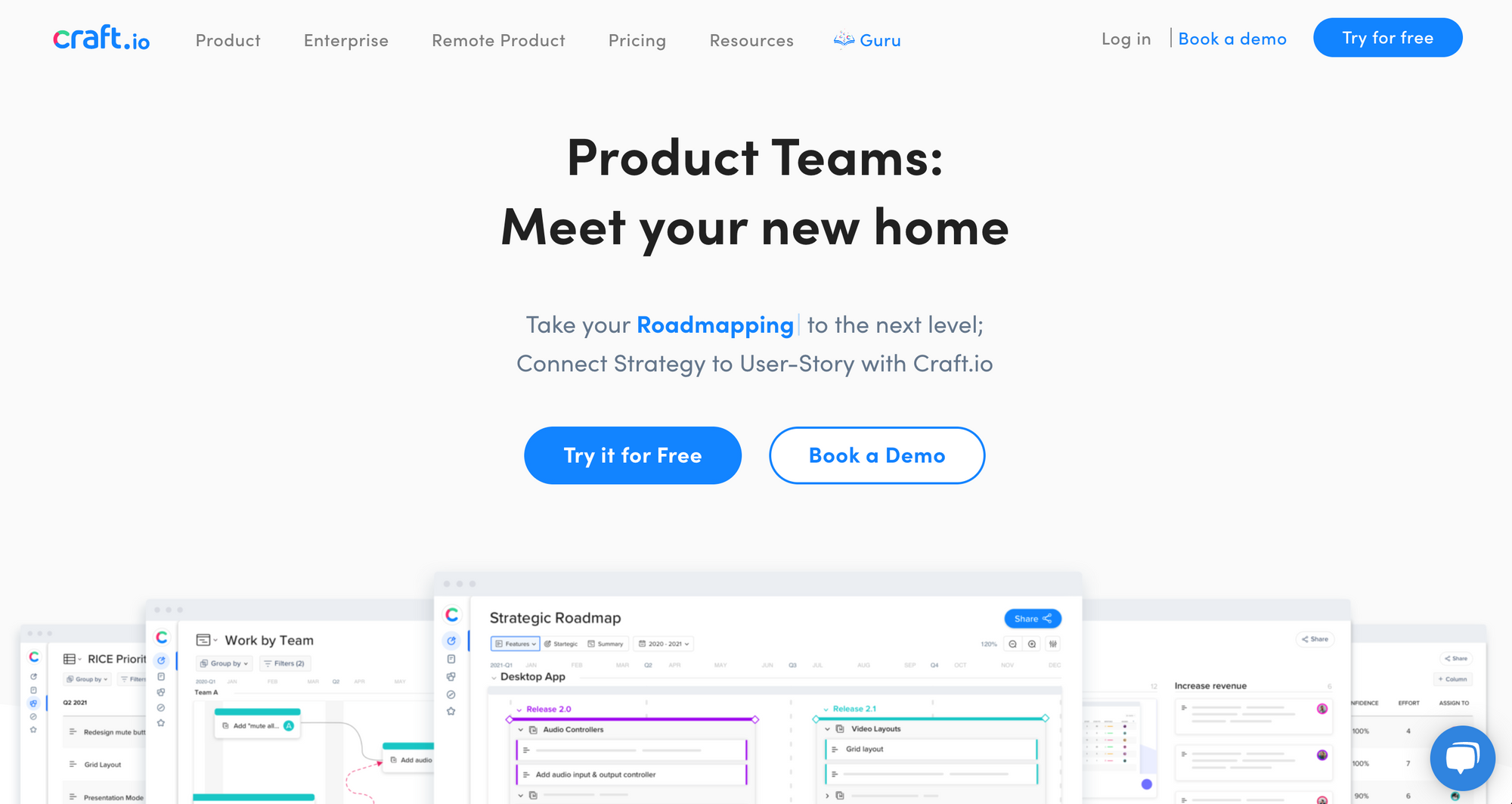
Craft is a product management tool empowering product managers to do their work from feedback capturing, planning, decision making, roadmapping, and more in one purpose-built tool that integrates with the most commonly used platforms.
Pricing: Starts at $39/ user /month.
Use case: Best for product management.
Pros of Craft
- Craft helps teams complete tasks, keep the deadlines game up high, and manage deadlines with a clear roadmap and workflow in the most organized manner ever.
- This tool ensures shared understanding with the entire team, arguably the most critical aspect of a successful product launch. It keeps everybody on the same page with a clear sprint backlog and milestones.
- Customers say it supports the entire product management life cycle with a rich, easy-to-use interface.
Cons of Craft
- It is expensive, and the UI is not intuitive enough.
- New users find it particularly difficult to navigate around craft unless given some training. The workflow is not very difficult, but you still need some time to use the tools.
9. Monday.com Vs ProdPad
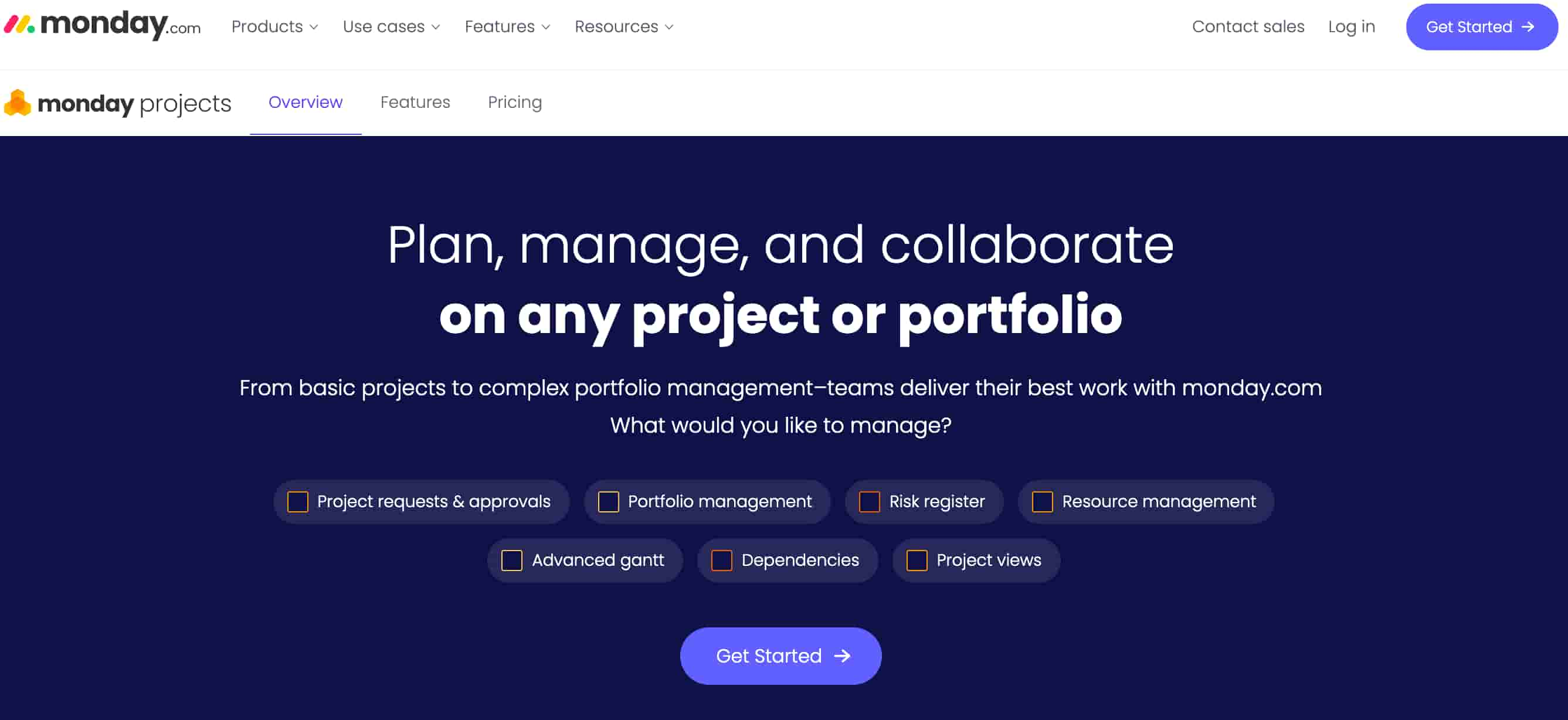
Monday is a project management and bug tracking tool that tracks all bugs in one place and provides a clear overview of bug statuses. It includes features to filter and prioritize bugs and create the right workflow for your team.
Pricing: Offers a free plan with limited features for up to two users, and paid plans start at $8/seat/month.
Use Case: Best for project management and bug tracking.
Pros of Monday.com
- It offers a range of features and tools for project management, task management, and team collaboration.
- Monday supports mind-mapping templates which connect different ideas and helps teams visualize how they can complement each other.
- It integrates with other productivity tools such as Dropbox, Google Calendar, OneDrive, etc.
Cons of Monday.com
- It does not support dedicated feedback portals and feedback segmentation.
- Monday.com is more expensive than other project management tools on the market.
Verdict: Rapidr is the Best ProdPad Alternative
As a product manager, you must decide on a tool to make your product feedback management process a piece of the cake.
Each solution presented here is unique and has a different feature set, catering to varying use cases. As a modern alternative to Prodpad, you can't go wrong with it.
We recommend Rapidr as the preferred Prodpad alternative, which comes with a modern design, tightly nit feature set, clean user experience, and reasonable plans. In addition, Rapidr offers a free 14-day trial. Sign up here.

